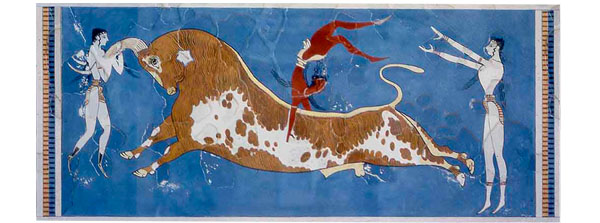From David to Goliath: Physical Stature

Skip the B.S.
By Skip Eisiminger

“Perhaps because I married a woman almost a foot shorter than I, I’ve never taken much pride in being tall, any more than I pride myself on being white or male. As the 7’ 7” Somali basket-baller Manute Bol quickly learned, in the NBA, one cannot succeed on height alone. I don’t think I ever exploited my height because ‘Mrs. Short Shanks’ (as I sometimes call my wife) has been there to take me down a notch.” Skip Eisiminger
“No one roots for Goliath.”—Wilt Chamberlain
“Short people got nobody to love.”—Randy Newman
 CLEMSON South Carolina—(Weekly Hubris)—11/25/2013—Most of us spend nearly two decades looking up to adults, and this may be the origin of the near-universal bias against the short.
CLEMSON South Carolina—(Weekly Hubris)—11/25/2013—Most of us spend nearly two decades looking up to adults, and this may be the origin of the near-universal bias against the short.
But at 5’ 3”, Muggsy Bogues was often among the NBA’s leaders in assists and steals. And at 5’ 5”, Audie Murphy with 33 medals from this country alone remains the most decorated soldier in American military history. Indeed, if all God’s children were six-footers, Winston Churchill, Toulouse-Lautrec, Charlie Chaplin, Truman Capote, Willie Shoemaker, and Bobby Short would have made very different contributions to our culture.
Glen McIntyre, a small-statured army buddy, epitomized for me the attitude that has led many undersized humans to be successful. “I may be small,” said Glen, “but I have a pile-drivin’ ass.” Though interpretations vary on what Glen meant, another friend, Ben Skardon, maintains that he survived the Bataan Death March because of his diminutive size. When Ben saw a Japanese guard coming down the line with blood in his eyes and a sword in his hand, he found the nearest tall POW, knowing that he would be the more likely target of the typically smaller Asian.
At 6’ 4”, yours truly, “Dr. Lanky Shanks,” has often complained that God rains on the tallest first, but that’s a remnant of my adolescent notions of inferiority. When I look at the scientific literature on height, I discover that on average taller people are healthier (if their weight is controlled), marry earlier, win elections, and live longer if their height does not exceed 6’ 1”. As for pay, one study revealed that for professionals of my height, I should have earned $450,000 per annum before I retired, but I never made a quarter of that amount. Today, I’ll settle for good health; money be damned.
Given the time we spend looking up at our parents, no one should be surprised at the ancient bias favoring the tall: the Chinese infantry in 200 BC probably averaged 5’ 9” while their officers topped out at 6’ 4”. Now, I wonder, were the three stripes I received in the army due to the proficiency tests I took, or my height? Was my promotion to full professor a recognition of my publications, service, and teaching or just my relative height above sea level? Having served on my share of personnel committees, I have to believe that height had nothing to do with my successes. Incidentally, I was hired at Clemson over the phone, sight unseen and stature unmeasured.
If it’s the depth of a bias you wish to measure, the language is an excellent leaded line to throw overboard. Shortness in English phraseology usually “comes up short” as do many of the stock references to Blacks and women. For every “short change,” “short arms and deep pockets,” and, “short end of the stick,” there’s a positive idiom such as “make short work of.” Yet for every liar’s “tall tale,” there’s a “tall, dark, and handsome,” “walk tall,” and “sitting tall in the saddle” to offset it. Furthermore, for every “petite,” there’s a “dumpy,” “squat,” and “stunted.” And for every “lanky,” there’s a “lofty,” “soaring,” and “monumental.”
Heightism, like racial and gender prejudice is less a problem in the developed world thanks to medical technology which now allows humans a physical increase in stature for the first time in history. Height-challenged First-Worlders are quietly paying $200,000 to have their children’s legs surgically lengthened and $41,000 for human growth hormones for each inch of height they produce. Until recently, Sumo novices spent about $7,000 for silicone scalp injections to improve their chances of a wrestling career in Japan.
To be honest, if I had a child who was projected to be shorter than five feet at maturity, I would do what could safely be done to improve his or her chances in the marriage and employment lottery. But for some, the body Nature gave them is never enough: at 6’ 4”, John Wayne reportedly wore four-inch lifts.
The bias against the short is perpetuated in Hollywood which often juxtaposes couples like Nicole Kidman and Tom Cruise in the same film. Though Kidman is four inches taller than her former husband, in publicity shots, they usually appeared equal. This illusion was achieved by Tom standing on a platform or Nicole standing in a hole. One might think the British royal family would rise above such maneuvering, but they haven’t. Worldwide, 750 million people saw Princess Diana and Prince Charles standing shoulder to shoulder at their wedding. Yet, when the Royal Mail issued commemoratives, Diana had lost about six inches in stature.
Thanks to another British subject, the world’s bias against short people has been reinforced by stunted, bald guys like Ernst Blofeld, Dr. Evil, and Mini-Me. In Goldfinger, Ian Fleming wrote, “It was the short men that created all the trouble in the world.” In fact, most of Bond’s opponents were tall and heavy-set. Now, it’s true that Napoleon, Mussolini, Hitler, Stalin, and Pol Pot all stood less than 5’ 9” but, like most generalities, Fleming’s has proven false: Saddam Hussein was 6’ 1” before the hangman stretched his neck; Bashar al-Assad is 6’ 2”, and Osama bin Laden was 6’ 4”.
When Greek explorers encountered the Pygmies of central Africa, they condescendingly referred to a proud people as those who stand between the “elbow and knuckle,” or a tribe no more than 18 inches tall. Indeed, from the Amazon to the Philippines, small-statured tribes average closer to 4’ 6,” which is ideal for maneuvering through dense underbrush but strong enough to kill elephants with a spear to the belly. If kudzu keeps spreading and American nutrition continues to deteriorate, we may see some Pygmies on our own continent, for the average height of Americans is on the decline while European averages exceed ours by as much as three inches. Indeed, the standard height of a Dutch door is 7’ 6” while ours is 6’ 7”.
Perhaps because I married a woman almost a foot shorter than I, I’ve never taken much pride in being tall any more than I pride myself on being white or male. As the 7’ 7” Somali basket-baller Manute Bol quickly learned, in the NBA, one cannot succeed on height alone. I don’t think I ever exploited my height because “Mrs. Short Shanks” (as I sometimes call my wife) has been there to take me down a notch. When I sensed that my students were intimidated by my height, I tried slouching. When that failed, if the class size allowed it, I sat.
If a proud short person is a dime among pennies, I was a penny among dimes. Like gunpowder, student evaluations in the 1970s made teachers of all stripes and statures tall targets, and we learned that regardless of how long our femurs were, we were responsible for our own growth. For their part, students learned that good wine is aged in barrels of all sizes.
4 Comments
Elizabeth Boleman-Herring
Skip, when I was living on Mykonos in the 1970s, I was amazed at the number of diminutive Greek men taking up with Amazonian Northern European women. I asked one if the height disparity ever got to him, and he explained, as though to an idiot, that his sons would all be taller–duh–than he. Wily, those Greeks! It’s a big topic, though: why women, for the most part, end up with taller men, AND why nature now selects for facial features in women that are more “childlike.” Well, not the Kardashians, obviously, which I am astonished to see my Spellcheck does not yet recognize. In any event, we haven’t yet reached any sort of sexual parity in the West when women still choose taller blokes and men choose baby-faced brides, and I and my own spouse bear out the general, I-feel-not-so-laudable trend. Sumoin’ else to ponder. e
Elizabeth Boleman-Herring
Meant to type “Sumpin’ else to ponder.”
Tim Bayer
I found your post to have lots of interesting stuff. It got me thinking if being taller was an advantage for me.
However, having been taller than average my entire life, I cannot accurately assess what it is like to have grown up shorter than average.
If I had been shorter, would a shorter me have been more driven, worked harder and therefore accomplished more than my taller self? Would I have gotten more or less opportunities because of my height?
Interesting thought experiment, but one that cannot be done in reality. However, from my biased perspective, it seems to me that my taller than average height (6’1″) has been an advantage.
Oh – wait, it is not all positive; Being tall can suck in airplanes, low ceiling cellars, seats in movie theaters, seats in stadiums, and getting into and out of cars.
Skip
The first time I rode in an elevator with “Tree” Rollins (7′ 1″), I understood how folks (esp. short students) felt around me (6′ 4″). That’s why I sit a lot in classrooms. Superior height is a kind of bright male plumage–not so much for women.